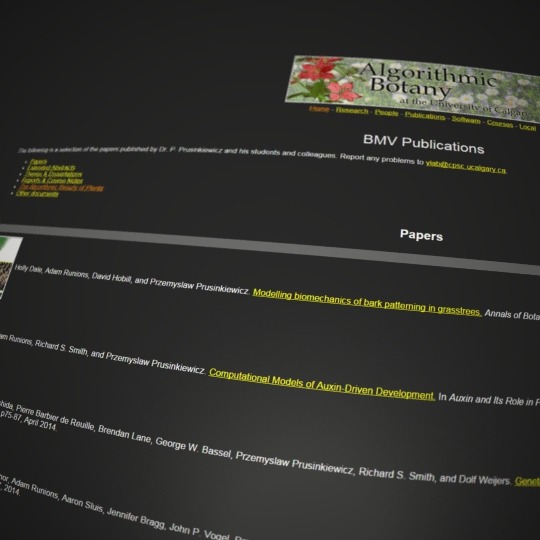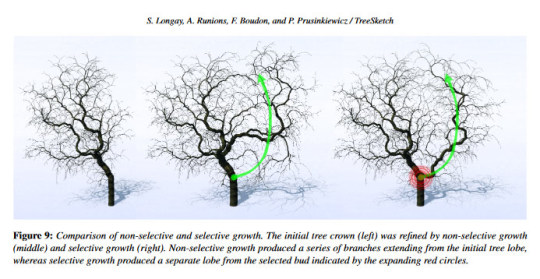
Algorithmic Botany
Here’s one for @video-game-foliage: the rest of the website for the Biological Modeling and Visualization research group at the University of Calgary. If you want to know about generating plants (or just computational models of botany), they have a ton of research.
One I particularly like is
TreeSketch, a research project for interactively creating and editing trees by Steven Longay,
Adam Runions,
Frédréric Boudon,
and Przemyslaw Prusinkiewicz.

I get excited about this kind of use of generative processes. The tool both provides instant feedback of the generated result and allows the user to adjust it. I’ve talked a lot about flexibility: I think it’s one of the most important uses for procedural generation, particularly for practical use in the wider world.
Many current production practices are comparatively like a writing on a typewriter or carving a marble statue: while it’s a bit easier to undo a recent mistake, making the wrong decision and then discovering that it needs to be changed after it is already baked in is a costly process. In comparison, generative tools are like having a word processor: going back and adjusting an earlier assumption is not only possible, but expected.
There are existing tools that work something like this: Houdini for 3D modeling and animation, Substance Designer for textures. They use node-based interfaces to provide non-destructive editing capabilities. However, they primarily operate by adjusting the creation process, whereas TreeSketch operates by specifying a desired result.
This approach—operating on higher-level concepts while still allowing detailed adjustment of low-level results—is a very powerful process. Complete creative control and generative details are not mutually exclusive. This is key to applying generative tools to problems in medicine, construction, and other domains.
This doesn’t mean that every manual process will be replaced with a generative one: Bernini’s statues are still impressive centuries later, after all. Though, come to think of it, the much later Rodin used mass production as an intrinsic part of his work, suggesting that there’s room for the generative processes themselves to be the artistic medium.
